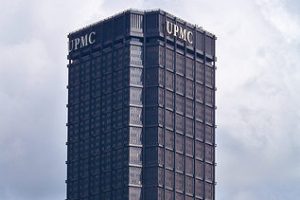Tenant Engagement in Sustainability Initiatives is a Win-Win
Buildings can achieve reduced resource consumption through thoughtful design, efficient technologies, and behavior changes. As building industry professionals, we often focus on how the design of the building and the technologies affect the building’s resource consumption, and few feel they can influence occupant behavior. Through evolveEA’s work, we have learned that by working with building management and staff, real savings can be achieved when engaging the building occupants in sustainability efforts, in addition to efficient technologies and design. In fact, a report by McKinsey from 2013 estimated that up to 20% of residential energy consumption can be saved by behavior changes alone1. We are applying this methodology to the commercial market as we have seen employees become passionate workplace sustainability advocates and believe they can have significant impact.
Independent of whether commercial tenants are engaged in a full service lease or pay for their submetered utility use, there are win-win solutions that result from transparency and a commitment to sustainability in commercial buildings. Reduced resource consumption can be passed down to the tenants in the form of lower lease rates or suspended rent increases. Savings could lead to building improvements that increase comfort or provide additional amenities to the tenants. Aside from resource conservation, engaging in workplace sustainability can make indoor environments more conducive to productivity and contribute to overall health and wellness for building occupants, as well as a greater investment and alignment with the organization.
Five Ways to Get Your Tenants Engaged in Sustainability
There are several ways to get tenants engaged in commercial building energy savings, but here are five ways we have found to be most successful:
- Understand the values of the tenant organizations and link them to the building management’s goals. By doing so, the tenants will be more invested in the initiative and the outcomes will be more directly beneficial to them.
- Educate the tenants about your sustainability initiatives and discuss how it will benefit them and how they can contribute. Provide opportunities for the tenants to share best practices with one another, to build a sense of community and show that we are all in this together. This can be accomplished through a Tenant Sustainability Committee, inclusion in a building newsletter, or other methods.
- Incentivize participation with competitions or financial rewards, such as internal waste conservation competitions or participation in regional or national programs, such as the Sustainable Pittsburgh Challenge.
- Develop clear communication channels, where tenants can provide feedback on the initiatives, and the building management can report back on progress and tracking of sustainability initiatives.
- Work together to create a “Green Lease”, where tenants are required to adhere to building sustainability policies, and the building management must agree to tenant requests, such as optimal indoor air quality and thermal comfort standards.
Our Case Study: The US Steel Tower
Our Tenant Sustainability Committee (TSC), which is made up of tenants interested in exploring and promoting sustainability initiatives at the Tower and making sustainability part of the building culture, has enabled us, as building manager, to increase our recycling and conservation efforts and shrink our carbon footprint. It is valuable for the tenants to share ideas in this open forum. In addition to the benefits to the environment, 600 Grant Street has been able to achieve certifications such as BOMA 360 and Energy Star, and we are currently pursuing the LEED for Existing Buildings operations and management certification. We could not have achieved this without tenant participation.
— Ramona Cain, CPM, RPA
Property Manager – USS Tower, Winthrop Management

Over the past couple of years, our relationship with the managers and the tenants of Pittsburgh’s iconic USS Tower has enabled us to test these strategies. On top of retrofits to most of the building’s leased space by primary tenant UPMC and to the tower’s core & shell by Winthrop Management, we have increased collaboration between the tenants and the building management. “The Tenant Sustainability Committee concept is one of the most effective mechanisms we’ve employed, as the benefits really are triple-bottom line. While results are not always immediate, there is a shared excitement among all parties at making progress towards common goals,” said Marc Mondor about the US Steel Tower initiative. The committee meets regularly to learn about various sustainability topics, collaborate on initiatives, and share updates about each other’s efforts. What’s more is that this process-based engagement model is scalable and replicable, to building portfolios or to any well-managed existing buildings.
Allison Robinson, UPMC Director of Environmental Initiatives, is an original TSC member who has been deeply engaged in its formation and ongoing activities. When we asked her about the reasons for UPMC’s participation, Ms. Robinson remarked:
Relative to affiliated rental properties, this is the first instance of organizing and engaging various tenants to collaboratively work with property owners and managers to incorporate sustainability into their facility. In being consistent with our commitment to sustainability and as a higher-density tenant organization, UPMC saw value in participation of the USS Tower Tenant Sustainability Committee. We participate by sharing our experiences with ‘greening’ our floors and incorporating operational practices.
Once the premise of the Committee was credibly established in early 2016, evolveEA has led 6-8 monthly and bi-monthly meetings per year. These meetings are helping Winthrop maintain the building’s Energy Star and BOMA 360 certifications and have led directly to the current LEED for Existing Buildings certification effort, which recognizes green operations and maintenance. In fact, the building is expected to earn an Innovation Credit toward the LEED EB certification in recognition of the Tenant Sustainability Committee. All of these efforts have contributed in some part to the USS Tower’s market value: five years ago the building was valued at $250M, and now has an asking price of $350M.
—
1. McKinsey & Company: Sizing the potential of behavioral energy-efficiency initiatives in the US residential market. November 2013.


